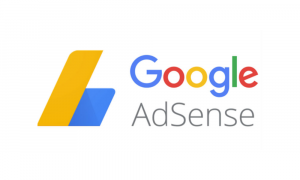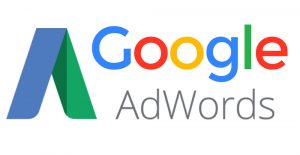Quality v. Quantity and Other Suppositions of Standard Motivation




Isn’t it impossible to write 100 articles in 100 days and provide quality? No. In a word, it isn’t impossible. Using standard prototypes, templates and structured writing habits anyone can write 100 articles I00 days.
Article Generation is Definitely NOT Easy
No matter the topic, from how to watch cartoons with teenagers to how to network on Twitter, the process won’t be easy, but it is doable. Chatting up content offers preliminary steps to article marketing. The challenge brings up concept and content generated with easy communicational style results in a winning proposition. Just get it done.
Niche Specific Content and Motivation Moves Traffic
Creating articles and their proper marketing is driving traffic from the start. By relating content to specific niche interests, traffic motivation becomes targeted and defined. Growing an article marketing campaign within a specific niche means topic generation and special interest development. Research? Never. Or maybe?
Risk it all and do some research. Review the topic and find other articles relevant to the topic. Look them over, read them, and outline a cause within the topic of interest. By the end of the outline, a concept of what drives traffic within that niche and how to write an article to generate traffic and ideas will be obvious.
Include Network Generated Interest and Venture Volume

Invite others to participate in the project by including Twitter and Facebook networks, adding contests and challenges to bring others into the project. The challenge must be a shared event, including contests, rewards and benefits for everyone involved. Include a purpose for the contest and invest some capital in an option to support a needy cause. Consider writing for a cause while marketing an internet business or concept. Motivation often drives larger networks of people toward a specific target with greater speed.
Make Article Marketing Viral with Free Gifts
The more people participating in an article marketing project and contest, the more viral the project will be. Viral results drive more traffic, increasing the results from challenges and contests by sending out free articles and gifts to other sites that drive increased traffic to the original project site. Offer up details and suggestions that bring benefits to everyone.
· Prove not only the ability to generate content and meet the challenge but also the concept of marketing a specific niche product.
· Generate tons of content for the niche and drive traffic to the site.
· Increase credibility and recognition for a specific niche or interest with valuable content.
· Prove expert knowledge in a given field of interest with quality documents published on reliable content sites.
· Dramatically increase visibility with viral articles that market business links, products and services online.
· Create a new habit that will last long after the challenge is past and keeps business tooting along at recession busting rates that mean high profitability.
Shorter articles are accepted at various article marketing sites online, including www.ideamarketers.com and www.ezinearticles.com as well as many others. Many of these offer the option of including links and references to other sites in the resource box of a well-written article.
Article Marketing Results in Profit Generating Targeted Traffic

Whether success in the challenge happens or not, the result of an all-out effort to generate massive numbers of promotional and marketing articles filled with content for website developers and various article marketing sites means targeted traffic and high-quality content for the Internet. The benefits of article marketing are renowned, while the results are tabulated in dollars and good sense.

 Direct marketing can get superb results with narrow targeting and proper execution, or deteriorate into much-detested junk mail or spam.
Direct marketing can get superb results with narrow targeting and proper execution, or deteriorate into much-detested junk mail or spam.
 Internet direct marketing takes the form of email campaigns. Particular care is needed to ensure that your message is delivered to the recipients’ inboxes, and not discarded by spam filters or sent to the junk folder. Certain words and practices can trigger spam filters and you need to be aware of these.
Internet direct marketing takes the form of email campaigns. Particular care is needed to ensure that your message is delivered to the recipients’ inboxes, and not discarded by spam filters or sent to the junk folder. Certain words and practices can trigger spam filters and you need to be aware of these. Google advertising, as well as Google itself, drives a large portion of the Web. Google AdWords allows advertisers to buy ads. Google AdSense lets site owners benefit.
Google advertising, as well as Google itself, drives a large portion of the Web. Google AdWords allows advertisers to buy ads. Google AdSense lets site owners benefit.
 AdSense is placed on a website by the site owner, or by giving a site access to a Google AdSense account to allow them to place it on a site. To begin, sign up for a Google account. The accounts are free, but they must be confirmed both through email and via telephone.
AdSense is placed on a website by the site owner, or by giving a site access to a Google AdSense account to allow them to place it on a site. To begin, sign up for a Google account. The accounts are free, but they must be confirmed both through email and via telephone. Contextual ads are ones that use the text of the webpage to determine the advertising. Website owners use popular keywords on their pages in order to bring in targeted traffic, but they are also used to make sure that the ads on the page are relevant. By choosing a Google ad word selection that will have better relevance to readers, website owners help their readers get the information they want as well as help themselves benefit from the AdSense revenue.
Contextual ads are ones that use the text of the webpage to determine the advertising. Website owners use popular keywords on their pages in order to bring in targeted traffic, but they are also used to make sure that the ads on the page are relevant. By choosing a Google ad word selection that will have better relevance to readers, website owners help their readers get the information they want as well as help themselves benefit from the AdSense revenue.